With the number of people moving into RVs to travel full-time, it’s little wonder that you might want to decorate or paint your RV interior walls just like home.
You might also be curious if you can hang things like photos or wallpaper on your RV interior walls.
All of this probably has you asking: What are RV interior walls made of?
RV walls are made out of 1 of 3 materials – plywood, medium density fiberboard (MDF), or vinyl.
Depending on which material your RV interior walls are made of, you will have different things you can do in terms of hanging items on the wall or painting your walls a different color.
Read on to learn more about the different materials used in RV interior walls, how you might decorate them, and what sort of insulation they will provide.
How Thick Are The Walls In an RV?
RV walls are usually around 2 to 2 and ½ inches thick.
As you might imagine, RV walls are much thinner than your walls at home, which is why the material used on the RV wall’s interior becomes important for soundproofing, insulation, and a surface for you to decorate.
RV’s will generally have an outer wall and an inner wall with insulation sandwiched between them.
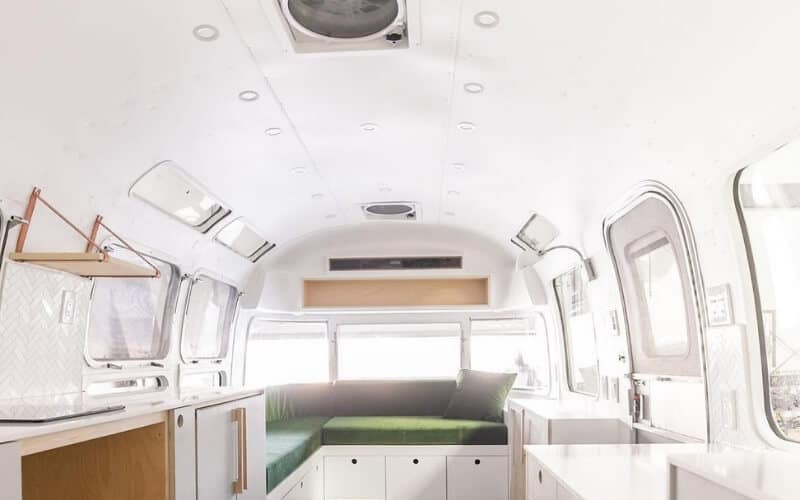
What are Camper Walls Made Of?
Camper walls are generally a 3-part sandwich made of an outer wall, insulation in the middle, and then an interior wall.
The outer walls of campers will usually be made from fiberglass, composite materials, or aluminum.
Airstream is the main brand nowadays that still builds their exterior walls of aluminum. Most other campers will have outer walls made from fiberglass or composites.
Insulation is then sandwiched between the inner and outer walls of your camper. RV insulation will either be made from fiberglass, spray foam, or rigid foam.
Fiberglass is the most common type of insulation in a camper.
The type and thickness of insulation you have will help determine how warm your camper stays on cold days and how cool it stays on hot days.
Insulation is rated in terms of “R-Values” which is basically a measurement of how insulated the camper is.
4-Season campers often have R-Values over 10, whereas lesser insulated campers would have an R-Value of 5 or less. After the insulation, comes the inner wall of your camper.
The inner wall of your camper will be made either of plywood, MDF, or vinyl.
Below, we’ll explain each of these materials in detail.
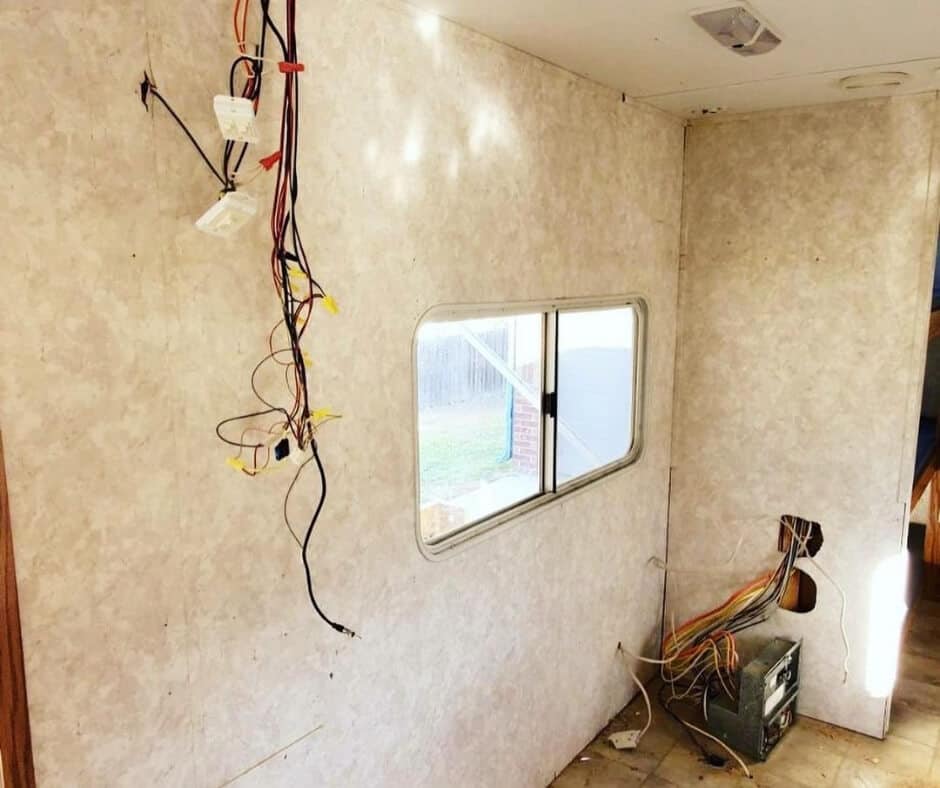
Types of RV Interior Wall Materials
There are three main types of materials your RV interior walls can be made of, each with their own set of pros and cons.
1: Composite plywood
Chances are, you’ve worked with plywood at home before. Plywood is basically several thin sheets of wood that are pressed together.
RV interior walls made of plywood tend to be found in mid to higher priced campers.
The plywood interior walls in your RV will usually have some sort of a wallpaper, veneer, or paint over them, so you will have to first remove this if you want to change the color of an RV interior wall made of plywood.
Here are the pros and cons of plywood walls:
PROS
CONS
2: Medium Density Fiberboard (MDF)
MDF is used in the interior walls of many RVs because of its lower price and low weight.
MDF is basically a bunch of sawdust that’s glued together and then pressed between sheets of wood veneer.
Even though that might sound bad, RV factories have been making MDF for years and they’ve gotten quite good at making it strong, light, and durable.
PROS
CONS
3: Vinyl
Vinyl has come a long way over the years and is now a very affordable option for RV interior walls. Vinyl is essentially very durable plastic.
It comes in a variety of colors, shapes, and textures for use in RV interior walls. Vinyl is light and quick and easy to install, making it a common choice for RV interior walls.
PROS
CONS
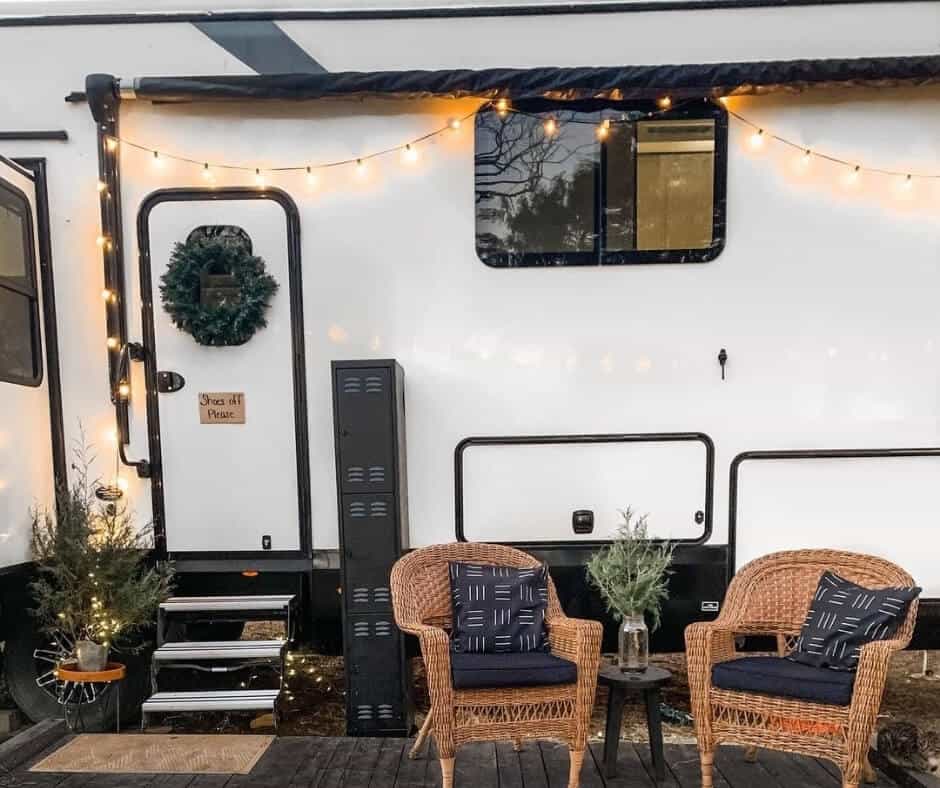
What Are Motorhome Walls Made Of?
For the most part, motorhome walls will be made from the same materials as other campers.
That is, they will have a fiberglass or metal outer shell, foam or fiberglass insulation, and then an MDF, plywood, or vinyl inner wall.
But there are some high end motorhomes that will make use of materials more commonly found in homes.
However, this is generally only true for custom motorhomes where the owner has requested special materials be used in the motorhome construction.
Otherwise, RV and motorhome manufacturers use a small set of materials for inner wall construction because these materials have proven to keep weight down – a very important feature for any RV.
Can I Paint The Interior Walls Of My RV?
If you have MDF or plywood for your RV interior walls, this is generally very easy to paint.
However, most RV interior walls will usually have wallpaper on them, meaning you will need to first peel the wallpaper off to get to a surface you can paint.
Once you’ve peeled the wallpaper from your RV interior walls, you then need to try to clean off any leftover wallpaper glue to create a clean surface for painting.
After that, you should brush on a coat of primer to further prepare your RV interior walls for painting.
Once the primer dries, you’ll be ready to apply your paint to MDF or plywood interior walls.
If your RV interior walls are made of vinyl, it’ll be more difficult to get them to take paint.
The best bet for vinyl walls is to simply change them out because RV interior wall material made of vinyl is highly affordable and comes in a variety of colors.
You’ll save yourself a lot of work, heartache, and money by simply getting different color vinyl walls rather than painting over what you currently have.

How Insulated The Interior Walls Of My RV?
RV interior walls are usually not very well insulated against weather, but they will generally protect fairly well against sound.
Many RVs are designated as 3-Season Campers because they aren’t designed to insulate for the coldest of winters or hottest of summers.
But, with the number of people moving into RVs full-time, RV makers are creating more RVs that are insulated for all 4 seasons.
These RVs will feature insulation materials and RV interior walls that are designed to keep the temperature comfortable inside your RV no matter what is happening outside.
RV Interior Walls Offer Soundproofing
RV campgrounds can get very noisy. Even though most parks have quiet hours, you will oftentimes be very close to your neighbors.
That’s why your RV interior walls are an important part of soundproofing so you don’t hear everything that your neighbors are doing.
Most RVs will be designed to keep out varying levels of sound because it is so common for RVs to be parked right by other campers.
RV walls made of MDF or plywood are better at keeping sound out than vinyl, but soundproofing boils down more to the insulation between walls.
Sounds are also kept out by the windows that your RV has. Many RV manufacturers use dual pane windows that help keep sound out.
Dual pane windows also help with window insulation.
Which Fits Your Budget And Lifestyle The Best
The bottom line is when you are shopping for an RV it is important to consider the material that your RV interior walls are made of – not only for decorative purposes but also for soundproofing purposes.
RV interior walls are made of several different materials that offer varying levels of durability and soundproofing.
Depending on which material your RV interior walls are made of, you’ll also have different things you need to consider when it comes to repainting or hanging items on your walls.
By understanding the information above, you’ll have a full picture of your RV’s interior walls and what you can do with them.

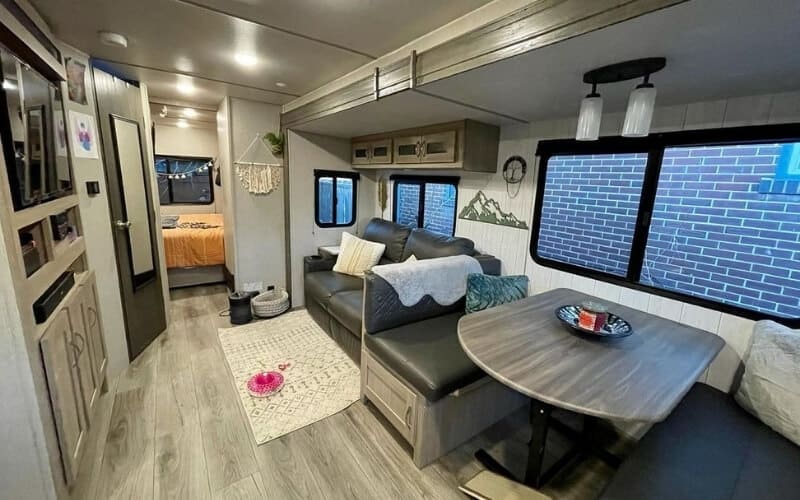
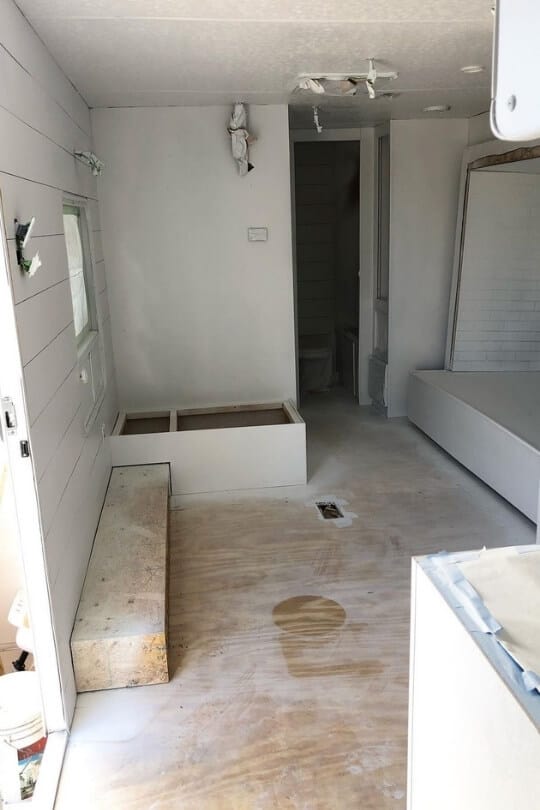

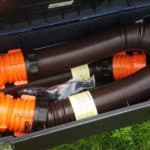
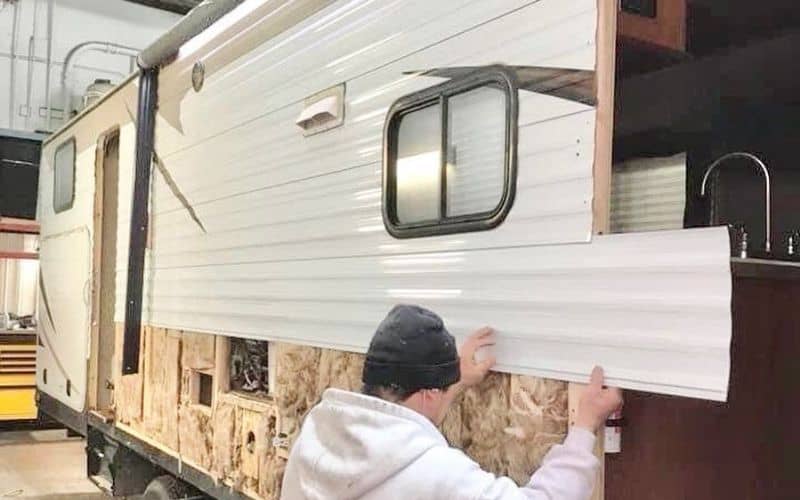
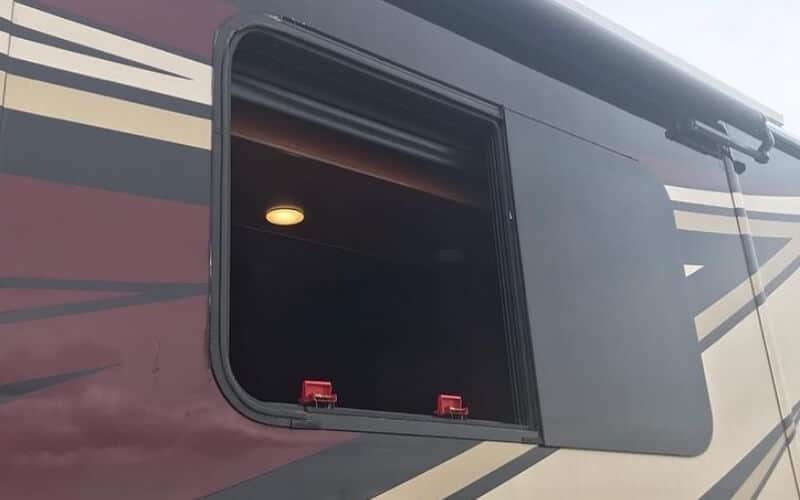
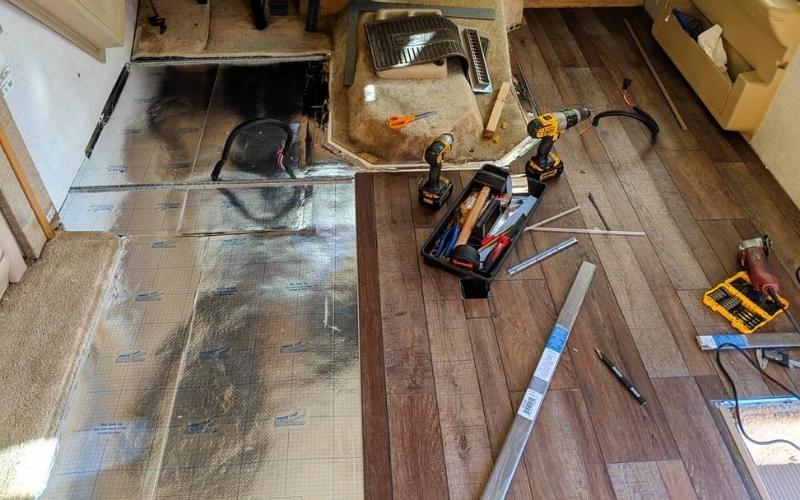
5 Comments
Daniel
3 years agoInformative article! Have there been any changes in the type of materials now available since this article was written? I have found an alternative to the ones mentioned above and was wandering about its suitability for use on the interior.
Glen Taylor
3 years agoI’m trying to figure out how to paint them but I’m afraid it won’t last, maybe I will change to wallpaper, it’s less expensive and can change when I get bored. Thank you for writing this article.
Glen Taylor
3 years agoI will continue reading your website, it is very helpful to me. Thank you for writing this article.
Appliance Guy
3 years agoBeen working on RV’s for over 2 decades and you statement about walls usually being 2- 2.5 inches thick is incorrect, Walls range from 1 3/8 to 2 1/16 but the industry recognizes that the most common are 1 1/2 and 2″ walls
Dalton
2 years agoIf you want to replace your motohome interior wall with something that suits your taste, the first thing you need to know is what RV interior wall is made of? Typically, manufacturers will use materials such as: Composite Plywood-consisting of many ultra-thin pieces of wood glued together to form a thick and large sheet; Medium-density fiber-optic panels-using only two wood veneer panels. or Vinyl-there are synthetic compounds, mainly plastic for the Interior Walls.